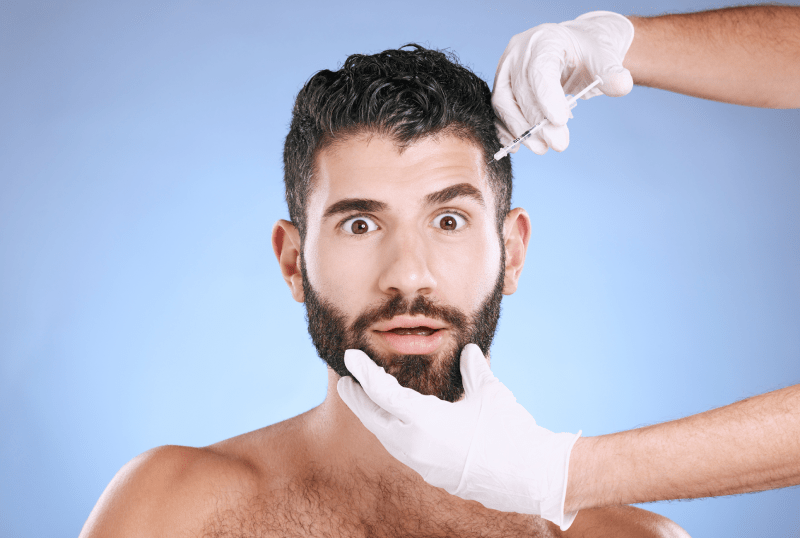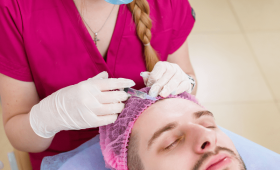Why Is Hair Transplantation So Affordable In Turkey?
The main reason why hair transplant costs in Turkey are significantly lower compared to Europe and the United States stems from the country’s generally lower cost of living, the intense competition within the healthcare sector, and favorable foreign exchange rates. Many clinics offer appealing all-inclusive packages to international patients, covering the operation, accommodation, and transfers. This structure effectively lowers the price without compromising quality. Due to the high volume of operations, Turkey hosts highly experienced specialists and is a leader in providing cost-effective, yet high-quality health services.
Does An Affordable Price Guarantee High Quality?
Turkey’s hair transplantation sector has successfully combined high quality, which is recognized globally, with affordable prices. An accessible price point does not signify low-quality service; on the contrary, intense competition and high demand necessitate that clinics utilize the latest technological equipment and retain highly experienced specialists. The crucial factors guaranteeing quality are the clinic’s accreditations, the expertise of the surgical team performing the operation, and the modernity of the medical devices used. When planning your treatment, it is important to consider the clinic’s references in addition to the price.
What Are The Main Techniques Used In Hair Transplantation?
There are two primary techniques that are most commonly used and yield the most successful results in modern hair transplantation: FUE (Follicular Unit Extraction) and DHI (Direct Hair Implantation). FUE involves the individual extraction of hair grafts from the donor area and their placement into micro-incisions opened in the recipient area, making it ideal for large areas. The DHI technique uses a special medical pen (Choi pen) to simultaneously open the canals and place the grafts. This method is often preferred for more sensitive areas, especially when maximizing density among existing hairs, and may offer a faster recovery process.
Which Hair Transplantation Technique Is The Most Preferred?
The most preferred technique generally varies depending on the patient’s specific needs, but the FUE (Follicular Unit Extraction) technique is the most widely used globally due to its flexibility in covering large areas and its relatively shorter operation time. However, in recent years, the DHI technique has also gained popularity, particularly for patients seeking a denser and more natural look, as well as for its minimal invasiveness and potential for less scarring. A specialist team will determine which technique is best suited for you following a detailed pre-analysis.
What Do Hair Transplant Price Packages Include?
Most hair transplant clinics in Turkey offer comprehensive all-inclusive packages to ensure the comfort of international patients. These packages typically cover medical expenses such as the operation itself, necessary pre-operative tests and examinations, post-operative care, medication, and special shampoo and lotion sets. Furthermore, many packages include airport transfers and accommodation (often in luxury hotels) throughout the treatment period. This holistic approach allows patients to budget more accurately and focus completely on their recovery.
What Is The Average Duration Of The Operation?
The duration of a hair transplant operation varies based on the number of grafts to be transplanted, the technique used, and the patient’s individual condition. On average, a single session operation can last between 6 to 8 hours. During this time, meticulous procedures such as graft harvesting, canal opening (in FUE), and graft implantation are performed. Since the operation is performed under local anesthesia, the patient can rest comfortably and take breaks throughout the process. The extended duration is an indicator that the procedure is performed with necessary precision and care.
Is Hair Transplantation A Painful Procedure?
Since the hair transplant procedure is performed under local anesthesia, the patient does not feel any pain or discomfort during the operation. There might be a slight sting or burning sensation when the anesthesia is administered, but this subsides within seconds. In the post-operative period, any mild discomfort can be easily managed with pain medication prescribed by the doctor. A slight tightness may be felt on the first night after the operation, but this is expected and controllable.
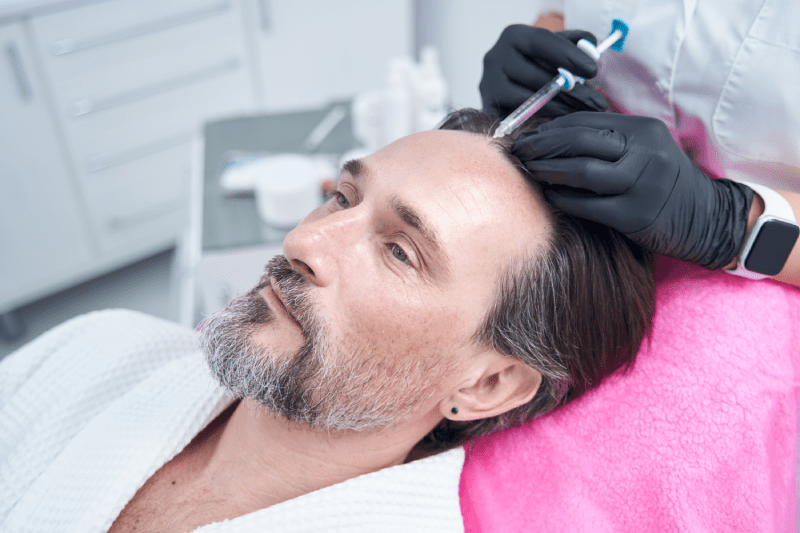
How Is Donor Area Sufficiency Determined?
Donor area sufficiency is vital for the success of a hair transplant. The donor area (usually the back of the head between the two ears) is analyzed by specialists for its hair follicle density and resistance to shedding. High-resolution hair analysis devices are used to measure the existing graft density, hair shaft thickness, and the overall quality of the roots. This analysis is critical for determining whether the area can supply the required number of grafts and for setting realistic expectations regarding the outcome of the procedure.
How Many Grafts Can Be Harvested From The Donor Area?
The number of grafts that can be safely harvested from the donor area in a single session depends on the density and quality of healthy hair follicles in that region. There is a limit to this number to prevent damage to the donor area and avoid noticeable thinning. Generally, between 4,000 to 6,000 grafts can be harvested in one session, but this is entirely individualized. Specialists aim to achieve maximum yield while preserving the long-term appearance of the donor area.
Is Non-Shaven Hair Transplantation Possible?
Yes, non-shaven hair transplantation (typically using DHI or partial shaving methods) is possible and is a popular option, especially for women or those who do not wish to use short hairstyles. In this method, only a small area from which the hair roots will be extracted is shaved, or sometimes no shaving is done at all. However, the number of grafts that can be harvested in a non-shaven procedure may be more limited, and the operation time can be longer. Your specialist will assess your hair structure and inform you of its suitability.
What Is The Success Rate Of Hair Transplantation?
The success rate of hair transplantation is quite high, typically ranging between 90% to 98%, depending on the quality of the technique applied and the experience of the surgical team. This success rate refers to the percentage of transplanted hair follicles that successfully take root and grow healthily in their new location. Other factors influencing success include the patient’s adherence to post-operative care instructions and their general health condition. Experienced specialists in Turkey aim for the highest possible graft survival rate.
When Do Hair Transplant Results Start To Become Visible?
Hair transplant results appear gradually and require some patience. The first real results are visible after 3 to 4 months when the new hair starts to grow. Before this, most of the transplanted hairs fall out (shock loss), which is a normal and expected part of the process. A significant portion of the hair will have grown by the 6th month, but the hair usually completes its thickening and reaches its final appearance between 12 to 18 months. It is essential to be patient and monitor the progress during this period.
What Is Shock Loss After Transplantation And When Does It Occur?
Shock loss is the shedding of hair shafts around the transplanted hair follicles, which occurs approximately 2 to 6 weeks after the hair transplant operation. This is completely normal and is a part of the healing process. The hair roots remain in place, but due to the trauma they undergo, they enter a resting phase (telogen) and shed the existing hair strands. This shedding indicates that the follicles are recovering and preparing to produce new, permanent hairs.
How Should The First Wash Be Performed After Hair Transplantation?
The first wash after a hair transplant is usually performed by a specialist team at your clinic, approximately 48-72 hours post-operation. This wash is carried out with an extremely gentle and specific technique to ensure the transplanted grafts are not dislodged or damaged. The first wash serves as a training session for the patient on how to perform subsequent washes at home. A special lotion is used to soften the scabs, followed by gentle rinsing. This delicate process is critical for graft survival.
What Is The Average Duration Of The Recovery Process?
Since hair transplantation is a minimally invasive procedure, the recovery process is quite fast. The first 3 days after the operation are the critical resting period. Swelling in the face and forehead typically subsides within the first 5 days. Scabbing in the transplanted area fully sheds within 7 to 10 days with regular and gentle washing. Within a few weeks, the visible signs of the operation fade, and you can fully return to your social life.
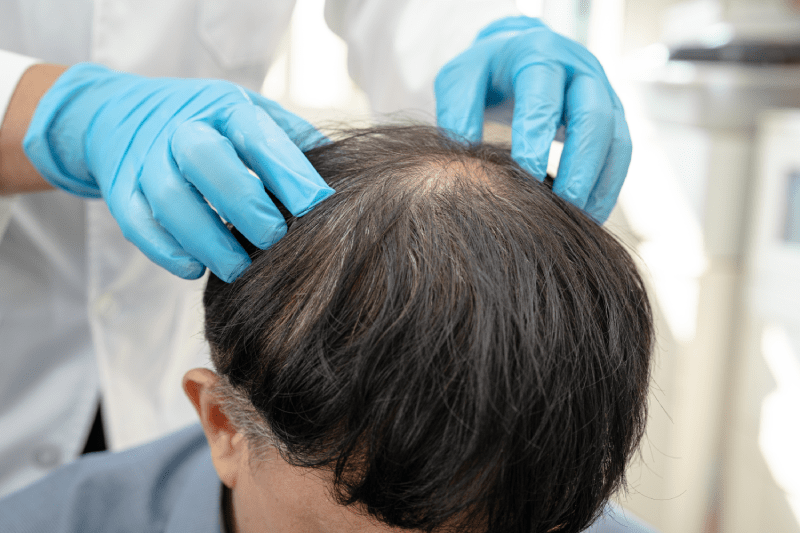
In Which Cases Is Hair Transplantation Not Possible?
Hair transplantation cannot be performed in certain medical conditions or if there is insufficient donor area. Uncontrolled heart diseases, diabetes, and certain infectious diseases like Hepatitis C and HIV may pose risks for the operation. Furthermore, the absence of a sufficient number of healthy hair follicles in the donor area would negatively affect the quality and quantity of the transplant, thus acting as an obstacle. Specialists will assess the risks by conducting detailed blood tests and reviewing the patient’s medical history.
What Is The Ideal Age For A Hair Transplant Operation?
The ideal age range for a hair transplant operation is generally considered to be 25 years and older. By this age, the pattern of hair loss has usually stabilized, and future areas of loss can be predicted more clearly. Transplants performed at a very young age carry the risk of continued future hair loss, which may necessitate an additional operation later on. However, specialists assess each patient’s situation individually to determine the most appropriate time for the procedure.
Can Women Undergo Hair Transplantation?
Yes, women can achieve successful results from hair transplant operations. Hair loss in women usually follows a different pattern than in men, often appearing as general thinning rather than a receding hairline. Non-shaven FUE or DHI techniques are typically preferred for women. After determining the cause of hair loss (genetic, hormonal, or nutritional), it is possible for suitable candidates to achieve permanent and aesthetically pleasing results.
What Are The Advantages Of Coming To Turkey For Hair Transplantation?
There are numerous advantages to choosing Turkey for hair transplantation. The first and most significant is the price-performance ratio; it offers high-quality service at much more economical prices compared to Western countries. Secondly, the experience of surgeons and teams specialized in this field is unmatched. Additionally, modern clinics, comprehensive packages (including accommodation and transfer), and the opportunity for a cultural trip make Turkey an attractive choice.
How Are Transportation And Accommodation Arranged In Turkey?
The vast majority of hair transplant packages in Turkey include transportation and accommodation services to maximize patient comfort. Patients are picked up from the airport and accommodated in luxury hotels, and all transfers between the clinic and the hotel on the operation day and for follow-up appointments are provided by private vehicles. This ensures that the patient can focus entirely on the recovery process without the stress of logistics in a foreign city. You must ensure these services are included when planning your treatment.
How Should Smoking And Alcohol Consumption Be Before Hair Transplantation?
It is mandatory to completely stop or severely limit smoking and alcohol consumption at least one week before the hair transplant operation. Smoking constricts blood vessels, reducing the oxygen and nutrient supply to the hair follicles, which negatively impacts graft survival and healing speed. Alcohol, being a blood thinner, can increase the risk of bleeding during the operation. Adhering to these instructions is vital for a successful outcome.
Can People With Chronic Diseases Undergo Hair Transplantation?
Individuals with chronic diseases (such as diabetes, thyroid issues, or high blood pressure) can undergo hair transplantation, provided these conditions are well-controlled. It is mandatory for the patient to provide detailed information about their current health status and medications and to undergo necessary tests before the operation. Specialists will evaluate whether the patient’s condition poses any risk for the operation and will take additional precautions if necessary.
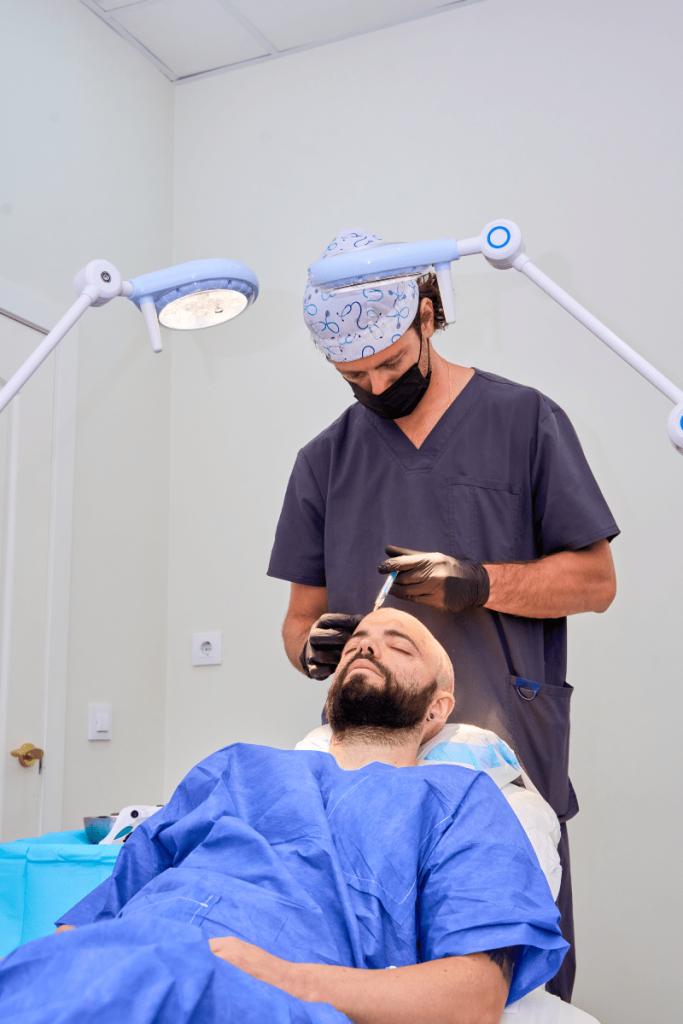
How Are Scabs Formed After Hair Transplantation Cleaned?
Scabs that form after a hair transplant are a natural part of the healing process and are generally expected to be completely cleaned within 7 to 10 days. To clean the scabs, a special softening lotion recommended by your doctor is left on the operation area for a while. Then, the scabs are gently removed with soft massage using the tips of your fingers, using lukewarm, low-pressure water. You must never pick at or forcibly remove the scabs with your fingernails. The correct washing technique ensures healthy healing.
Is It Risky To Go Out In The Sun After Transplantation?
Yes, exposing the transplanted area to direct sunlight for the first month after a hair transplant is highly risky. Sun exposure can damage the newly placed follicles and cause permanent discoloration (hyperpigmentation) in the transplanted area. When you need to go outside, you must use a wide-brimmed hat or cap that does not put pressure on the operation site. This protective measure is a critical step for the healthy survival of the hair roots.
Are There Any Special Products To Be Used After Hair Transplantation?
Special products are recommended after a hair transplant to support the healing process and promote the healthy growth of the transplanted roots. These generally include specially formulated pH-balanced shampoos and moisturizing lotions. Additionally, in some cases, vitamin supplements or PRP (Platelet Rich Plasma) treatments that slow down hair loss and improve hair quality may also be recommended. These products will be provided to you by the specialist team performing the operation.
Are The Transplanted Hairs Permanent For Life?
Yes, the hairs transplanted through the hair transplant procedure are permanent for life. The reason for this is that the grafts used for implantation are taken from the donor area (the back of the head), which is genetically resistant to the effects of the testosterone hormone. These roots maintain their non-shedding characteristic wherever they are transplanted. This permanence is the key factor that makes hair transplantation the most effective and long-term solution against hair loss.
How Is A Natural Look Achieved In Hair Transplantation?
The key to achieving a natural look lies in the expert team’s skill in hairline design and their mastery of the implantation angle. The hairline must be designed in a personalized manner that suits the patient’s face shape and age. Furthermore, placing the hair follicles at an angle and direction consistent with the natural growth of your hair ensures that the hair has a natural flow once it grows out thick. This delicate work can only be successfully performed by experienced surgeons.
Might A Second Hair Transplant Operation Be Necessary?
In some cases, a second hair transplant operation may be necessary. There are two main reasons for this: First, if the patient’s hair loss continues in different areas after the initial operation, requiring transplantation to these new regions. Second, if the patient requests a higher density than what was achieved in the first operation. Before a second operation, specialists will check whether the donor area can provide a sufficient number of healthy grafts.
How Should Travel Planning Be Done?
When planning travel for a hair transplant in Turkey, it is generally recommended to set aside 3 days. The first day is for the operation, the second day for the first check-up and rest, and the third day for the first wash and final check-up. If all-inclusive packages covering airport transfers and accommodation are chosen, you only need to organize your flight reservations. Be sure to choose comfortable clothing and take all necessary steps to ensure your travel is stress-free.
What Are The Risks Associated With Hair Transplantation?
While hair transplantation is generally a safe operation, like any surgical procedure, it carries some minor risks. These risks include mild swelling and bruising, infection (very rare), temporary numbness or itching in the donor area, and the formation of pimples in the transplanted area. However, in modern clinics operating under international standards and sterile conditions, these risks are minimized. Adhering to your doctor’s instructions is the most important step in minimizing any potential risks.
Which Season Is More Suitable For Hair Transplantation?
Hair transplantation can be successfully performed in any season of the year. The choice of season mostly depends on the patient’s personal preferences and social schedule. During the summer months, extra caution must be taken against the sun, while wearing a hat might be easier in the winter months. The important thing is to strictly follow the specialists’ recommendations to protect against direct sun exposure, excessive sweating, and the risk of infection in the first few weeks, regardless of the season.
When Can Sports And Exercise Be Resumed After Hair Transplantation?
Non-strenuous exercises, such as light walking, can be resumed approximately one week after the operation. However, intense sports and exercises that cause heavy lifting, cardio, or excessive sweating should be avoided for at least one month. High blood pressure and sweating can damage the newly implanted, sensitive grafts and increase the risk of infection. For activities like swimming, it is important to get approval from your clinic.
What Is The Most Important Success Criterion In Hair Transplantation?
The most important success criterion in hair transplantation is the high survival rate of the transplanted hairs and the resulting natural appearance. A high survival rate ensures that the vast majority of transplanted grafts grow healthily, while a natural appearance refers to the perfect harmony of the hairline, implantation angle, and density with the patient’s facial features. The best results can only be achieved by experienced teams with an artistic perspective.
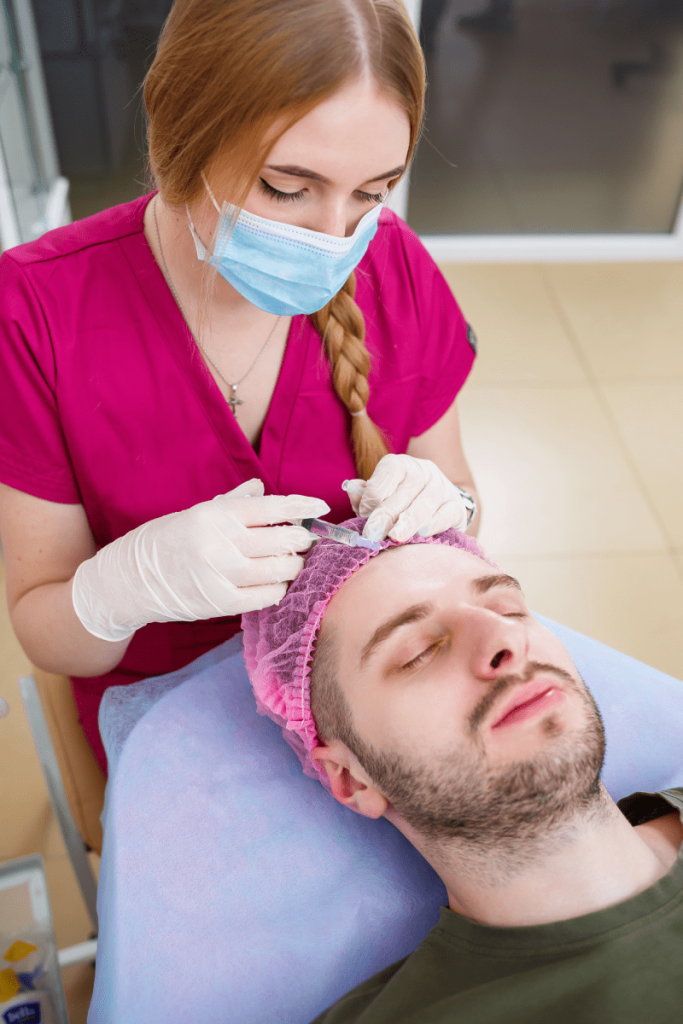
Are Eyebrow And Beard Transplantation Also Performed With The Same Techniques?
Yes, eyebrow and beard transplantation procedures are fundamentally based on the same principles as hair transplantation, using the FUE or DHI techniques. Grafts taken from the donor area (usually the back of the head) are also used for these procedures. However, the angle and direction of implantation are much more critical for naturalness in eyebrow and beard transplants; hair follicles must be placed at much flatter angles and with much greater precision on the skin. This demands a high level of expertise.
Do Hair Transplant Clinics In Turkey Comply With International Standards?
Leading hair transplant clinics in Turkey fully comply with international health standards (such as JCI, ISO). Many clinics use equipment that is equivalent to, or even more modern than, that found in medical centers in Europe and the US. The highest level of attention is paid to hygiene, sterilization, and patient safety. This compliance is a fundamental reason why international patients confidently choose Turkey for their treatment.
Conclusion and Recommendation
Undergoing a hair transplant in Turkey is the smartest way to both protect your budget and receive world-class quality service. If you wish to achieve the hair of your dreams and experience this process in the most comfortable and reliable way possible, you should partner with a specialized team that can plan the entire process from start to finish.
To receive detailed information about the most affordable and highest-quality hair transplant packages in Turkey, get a free preliminary analysis, and create your personalized treatment plan, contact Cure Holiday immediately. This will be the first reliable step on your journey to healthy hair.
